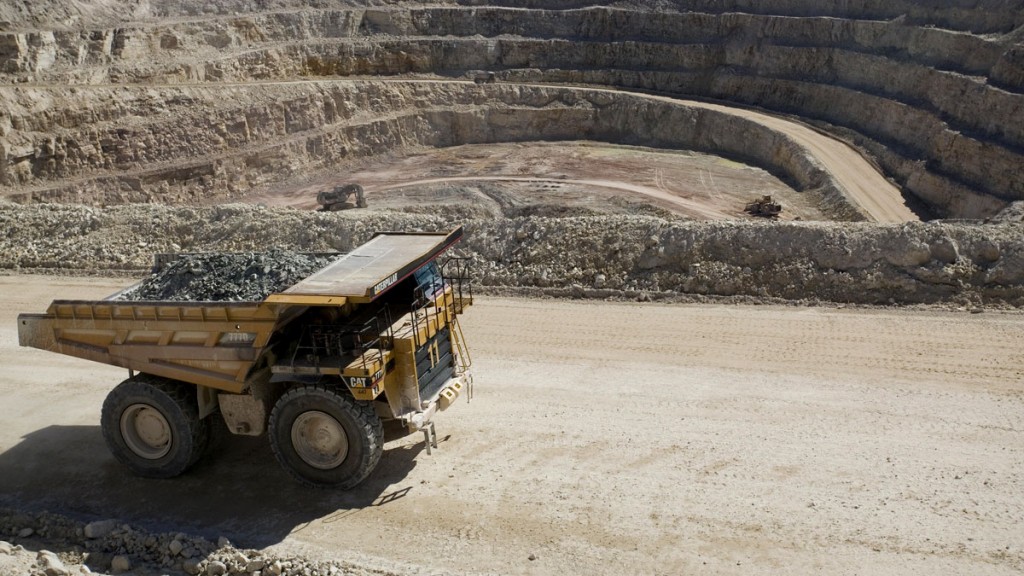
Last year was a very good one for commodities.
Well, mostly, that is.
One particular resource ended the year with a 41% fall, hitting a 12-year low in November.
There can be few investments that are quite as heavily despised as uranium these days.
But is 2017 the year that the nuclear fuel makes a comeback?
The long and harsh uranium bear market
The price of uranium peaked at $137 per pound roughly in mid-2007. Since then, the substance has endured an absolutely rancid decade or so. There’s no other word for it.
The mid-2007 spike was a very clear case of bubble pricing, so uranium had its bust before the majority of the rest of the commodity complex.
Then the 2011 Fukushima disaster in Japan triggered something of a global retreat from nuclear power, particularly in Germany.
As the Sydney Morning Herald points out, last year was the seventh year in nine that the price of uranium fell. Leigh Curyer, of Canadian uranium producer NexGen Energy, told the paper earlier this month: “I don’t think there’s a mine profitable at current spot prices”.
However, that may not be the case for much longer. Earlier this week, the uranium price surged – from just over $20 to around $24.50 per pound. Uranium stocks followed suit, unsurprisingly.
To find out why, we have to look to Kazakhstan. The country is the world’s biggest producer of uranium, pumping out nearly 40% of global production. And earlier this week, Kazakhstan’s state-run uranium company – Kazatomprom – said that it’s reducing uranium production by 10%. For context, that’s equivalent to around 3% of global uranium production, using 2015 supply figures.
Ultimately, said chairman Askar Zhumagaliyev, it’s all about the money. “While the outlook for nuclear energy growth continues as strong as it has been in many years, the realities of the near-term uranium market remain in oversupply… These strategic Kazakh mineral assets are far more valuable to our shareholders and stakeholders being left in the ground for the time being… Their greater value will instead be realised when produced into improved markets in the coming years.”
It’s the usual story. The price of a commodity booms (uranium’s all-time low of $7 per pound was hit in 2001, before it then joined the rest of the commodities in a rampant bull market). This encourages more supply – old, unprofitable mines reopen, new resources are uncovered, explorers go hunting in places once deemed too hostile or unpromising.
Eventually, a surfeit of excitement meets with a surfeit of supply to create a horrendous bust. The price collapses to the point where even the best-run mines are unprofitable. The cutbacks kick in, even as the price continues to collapse. Some people go bust. Eventually there isn’t enough of the resource to go round.
And we start the merry cycle all over again.
We’ve seen it already with the wider commodities space. Most other raw materials saw their peak for this cycle in 2011, and are now picking themselves back off the floor after a five-year bear market.
So can the uranium rebound last?
When these things turn around, they can move surprisingly quickly
It’s not as though there’s a sudden shortage of uranium. There is still enough to power the world’s nuclear plants and to enrich the world’s nuclear weapons.
It’s true that there are plenty of nuclear reactors under construction – India and China are the main ones who want to grow capacity, while Russia is adding a few. The US wants its own ageing plants to last longer, while Japan is looking at turning several reactors back on. But this has all been part of the story for a while.
However, the thing is, when a market turns, the long-term can get priced into the short-term very quickly.
The news from Kazakhstan is merely the latest bullish story on uranium. Since Donald Trump was elected, companies mining for the nuclear fuel have had a long-absent spring in their steps, partly because Trump loves to Tweet about the size of his nuclear arsenal.
Canada’s Cameco – one of the biggest uranium companies – has shot up from a November low of around $7.50 to more than $11 a share now. It’s a similar story for NexGen Energy, another Canadian producer.
If you think that the recovery is real – I suspect it is, but betting the house on these things is never wise – then the stocks involved could have a lot further to run.
When uranium had a recovery bout following the financial crisis, Cameco (NYSE: CCJ) doubled inside six months and then near-doubled again between 2009 and the Fukushima disaster in 2011 (back then, uranium still traded at around $70 a pound).
Just be aware that Cameco is involved in a potentially expensive tax dispute with the Canadian tax office, one that has been rumbling on since 2009 and apparently is unlikely to be resolved until later this year (at the earliest).
Alternative ways to play uranium include BHP Billiton (LSE: BLT), which is one of the biggest players in the market, though hardly a pure play. Or you could opt for the Geiger Counter fund (LSE: GCL) which invests in a range of uranium-related companies.
If you do want to get in, I’d suggest starting small and building your exposure rather than going all-in right now. But if it is the start of a new bull market for uranium, even a small exposure should pay off nicely.